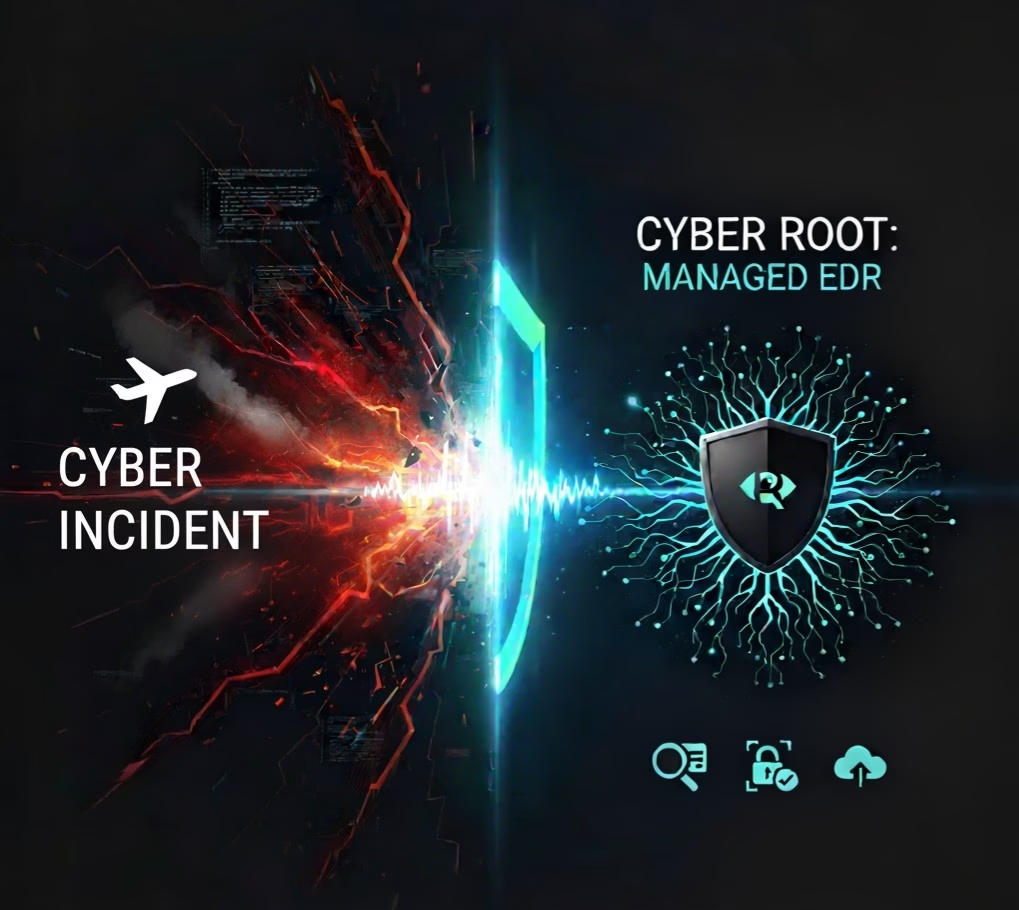The Flight Down: What the Collins Aerospace Attack Reveals About Your Business’s Cyber Resilience
Imagine the chaos at airports across Europe: flights delayed, queues for check-in stretching for hours, and thousands of travelers stranded. This wasn’t a natural disaster it was a cyber-attack on Collins Aerospace’s critical software. For your customers, it meant missed connections and ruined holidays. For the business world, it was a stark reminder of a single point of failure and the devastating ripple effect it can cause.
No business is too big or too small to be targeted. The real question is: when an attack inevitably strikes, will your business experience a controlled disruption or total chaos?
That’s where Managed Endpoint Detection and Response (EDR) comes in.

The Collins Aerospace Incident: A Timeline of Disruption
The attack on Collins Aerospace, an aviation and defense technology giant, targeted its MUSE software, which manages passenger processing for over 100 airports. The consequences were immediate and widespread:
- Major European airports, including Heathrow, Brussels, and Berlin, were hit with widespread delays.
- Electronic check-in and baggage systems failed, forcing airports to revert to manual, slow-moving processes.
- Some airlines, like British Airways, had contingency plans, but others were left exposed, highlighting the disparity in resilience across the industry.
This wasn’t an attack on just one airline; it was an attack on the interconnected supply chain. It exposed a fundamental truth: a vulnerability in one essential vendor can paralyse an entire ecosystem.
Beyond the Headlines: Why This Attack Should Concern Your Business
Your business may not rely on airport check-in software, but the lessons from the Collins Aerospace incident are universally applicable:
- A Single Point of Failure: Just like airlines rely on a single software vendor, many businesses depend on a handful of critical suppliers or third-party platforms. If that provider is compromised, your operations could come to a grinding halt.
- Speed is Everything: The fallout from a cyber incident is measured in minutes, not days. The ability to detect, contain, and recover from an attack can be the difference between a minor blip and a business-shattering event.
- The Cost of Inaction: The costs associated with a breach go far beyond just fixing the technical issue. There’s reputational damage, financial penalties, and a significant loss of customer trust..
The CyberRoot Solution: Don’t Get Grounded by an Incident
At CyberRoot, we believe that preparation is the best defence. A reactive approach is no longer enough, you need a proactive strategy to minimise damage before it happens. Our Managed Endpoint Detection and Response service provides your business a peace of mind during such incidents.
Don’t wait for a crisis to expose your weaknesses. The Collins Aerospace attack is a powerful cautionary tale. Let CyberRoot build your incident response playbook so you can navigate the storm with confidence with our Managed Detection and Response service.
Ready to build a more resilient future for your business? Contact CyberRoot today to learn more about our managed Detection and Response services.
